English
Hi all, this time I want to share an a news that made me think about how nature and urban degradation are strictly correlated Wild Boars Invasion
Italiano
Salve a tutta la community, quest'oggi voglio condividere una notizia che mi ha fatto riflettere a come la natura e il degrado delle città sono strettamente correlate L'invasione dei Cinghiali
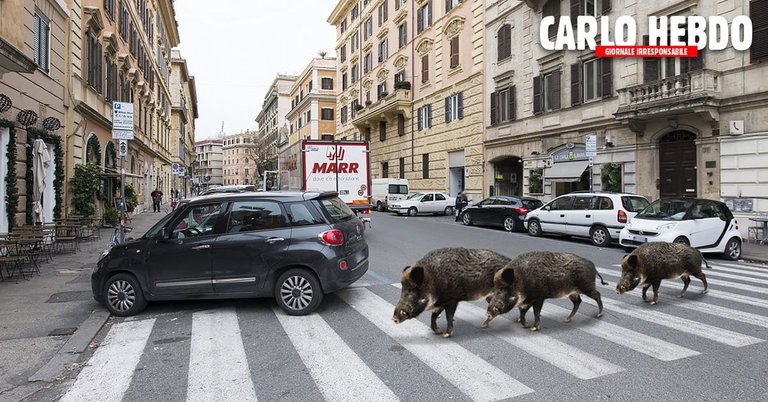
Image source
English
They run free in our cities, from Rome to Genoa. Immortalized by photos and videos that are no longer newsworthy. But why are there so many wild boars? Two possible explanations, above all: "Abandonment of the countryside and reintroduction of the species especially for hunting. This has led to the recovery of a series of areas where these animals had been absent for centuries. This has favored the increase of the wolf. The wild boar it is in fact its main prey"
How many are there today?
Today, answering this question rigorously is impossible. "I would say it like this: you can imagine that there are no fewer than two million wild boars. Constantly increasing since the postwar period. I would say that they are more numerous today than in the seventeenth century. But for eleven years we have not had official statistics on ungulates, no one counts them anymore. . And this is a big problem ”.
Road accidents
Just to give an idea: an adult male of wild boar weighs on average between 70 and 90 kilos, but it can also reach one and a half quintals. This shows how dangerous animals are for circulation. "In Europe every year we have a million road accidents caused by ungulates." The figure refers to 2010. While Istat in the last ten years has recorded + 81% of serious accidents caused by animals on provincial roads. The cure should be "Serious fences, even on motorways; suitable signage; acoustic and luminous bollards; a map of accidents as they do in Slovenia". Asaps statistic confirms concerns. As of June, 76 serious accidents caused by animals (wild animals, 92% of cases) had been recorded, 4 people died and 86 were seriously injured.
Italiano
Scorrazzano liberi nelle nostre città, da Roma a Genova. Immortalati da foto e video che ormai non fanno più notizia. Ma perché i cinghiali sono così tanti? Due possibili spiegazioni, su tutte: "Abbandono delle campagne e reintroduzione della specie soprattutto per la caccia. Cosa che ha portato a recuperare una serie di aree dove questi animali erano assenti da secoli. Cosa che ha favorito l’aumento del lupo. Il cinghiale è infatti la sua preda principale".
Quanti sono oggi?
Oggi, rispondere a questa domanda in modo rigoroso è impossibile. "La direi così: ci si può immaginare che i cinghiali non siano meno di due milioni. In aumento costante dal dopoguerra. Direi che sono più numerosi oggi che nel Seicento. Ma da undici anni non abbiamo statistiche ufficiali sugli ungulati, nessuno li conta più. E questo è un grosso problema”.
Gli incidenti stradali
Tanto per dare un’idea: un maschio adulto di cinghiale da noi pesa in media tra i 70 e i 90 chili, ma può arrivare anche a un quintale e mezzo. Questo fa capire quanto gli animali siano pericolosi per la circolazione. "In Europa ogni anno abbiamo un milione di incidenti stradali provocati da ungulati". Il dato si riferisce al 2010. Mentre l’Istat negli ultimi dieci anni ha registrato un +81% di sinistri gravi provocati da animali sulle strade provinciali. La cura poptrebbe essere "Recinzioni serie, anche sulle autostrade; segnaletica adatta; dissuasori acustici e luminosi; una mappa degli incidenti come fanno in Slovenia". Conferma le preoccupazioni la statistica Asaps. Fino a giugno erano stati 76 gli incidenti gravi provocati da animali (selvatici, nel 92% dei casi), 4 persone sono morte e 86 sono rimaste ferite seriamente.

Image source ;
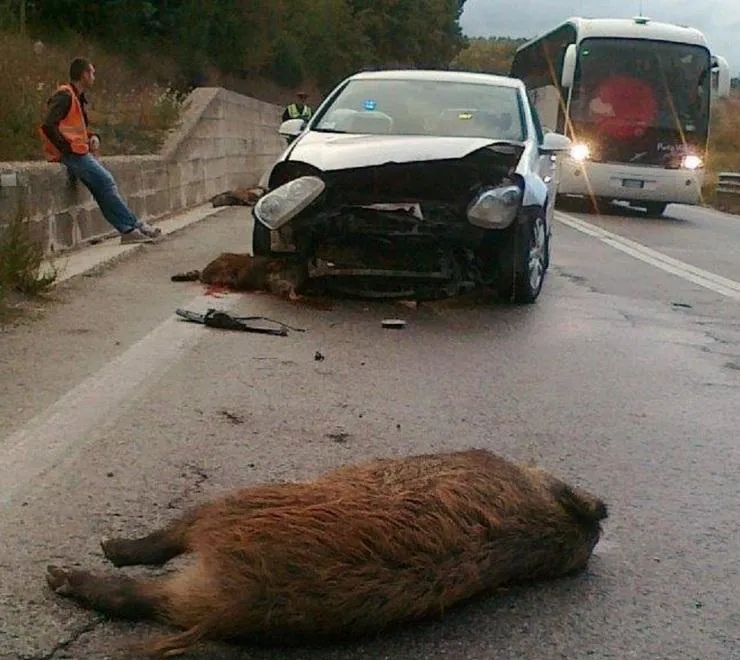
image source
English
The damages Coldiretti has estimated the disasters caused by wild boars at two hundred million a year. I do not comment on the number but I also put other risks in line: hygiene problems because these animals feed on waste. But also dangers for humans. Experts explain: "They rarely attack humans but they can do it if they are injured or even to get food". In the end we are not so far from certain Japanese scenes, "where urban wild boars wait for people outside supermarkets and throw themselves on shopping bags".
The remedies in Europe
In Berlin, the experts recall, they have to deal with "10,000 wild boars. Spain is worse off than us. The most effective country in tackling the problem is certainly Germany. Which has a precise plan for killing and capturing. The data. they are readily available. Not only that, rubbish is handled very carefully. " An irresistible lure, as Rome demonstrates every day.
Italiano
I danni Coldiretti ha stimato in duecento milioni all’anno i disastri provocati dai cinghiali.Io non mi esprimo sul numero ma metto in fila anche altri rischi: problemi igienici perché questi animali si nutrono di rifiuti. Ma anche pericoli per l’uomo. Spiegano gli esperti: "Aggrediscono rarissimamente gli esseri umani ma possono farlo se sono feriti o anche per procurarsi cibo". Alla fine non siamo così lontani da certe scene giapponesi, "dove i cinghiali urbani aspettano la gente fuori dai supermercati e si buttano sulle borse della spesa".
I rimedi in Europa
A Berlino, ricordano gli esperti, devono fare i conti con "10mila cinghiali. La Spagna è messa peggio di noi. Il Paese più efficace nell’affrontare il problema è sicuramente la Germania. Che ha un piano preciso di abbattimenti e catture. I dati sono facilmente disponibili. Non solo, viene gestita con molta attenzione la spazzatura". Un’esca irresistibile, come dimostra ogni giorno Roma.
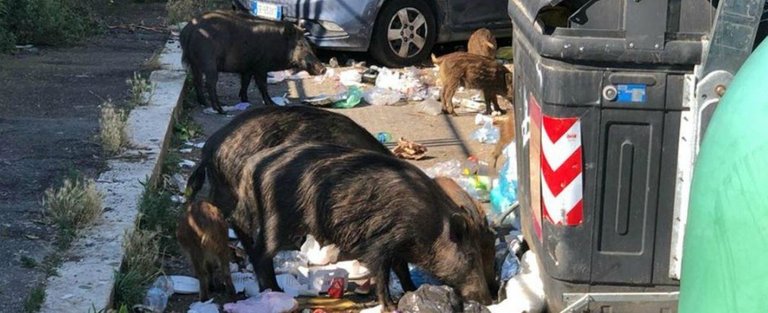
image source
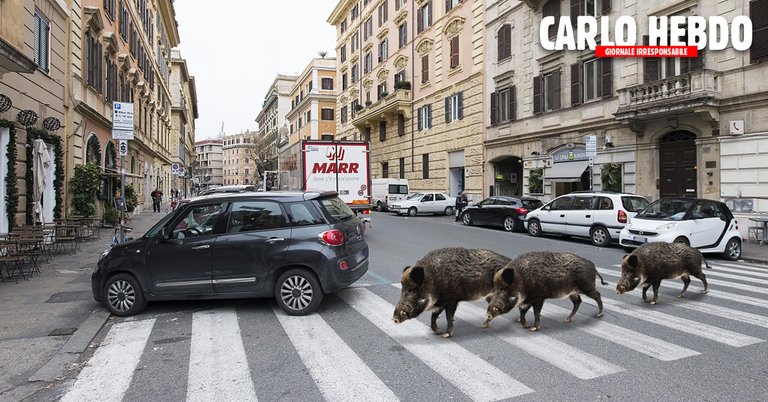
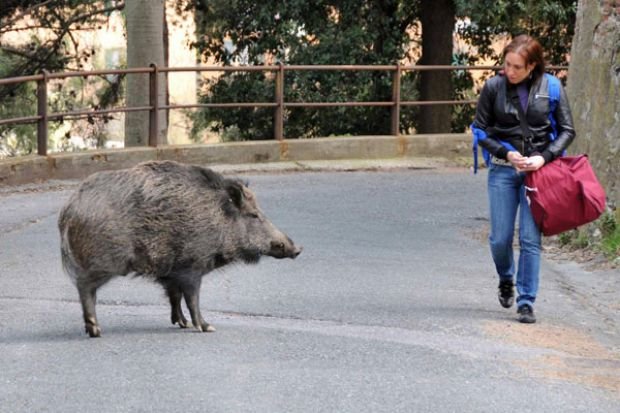
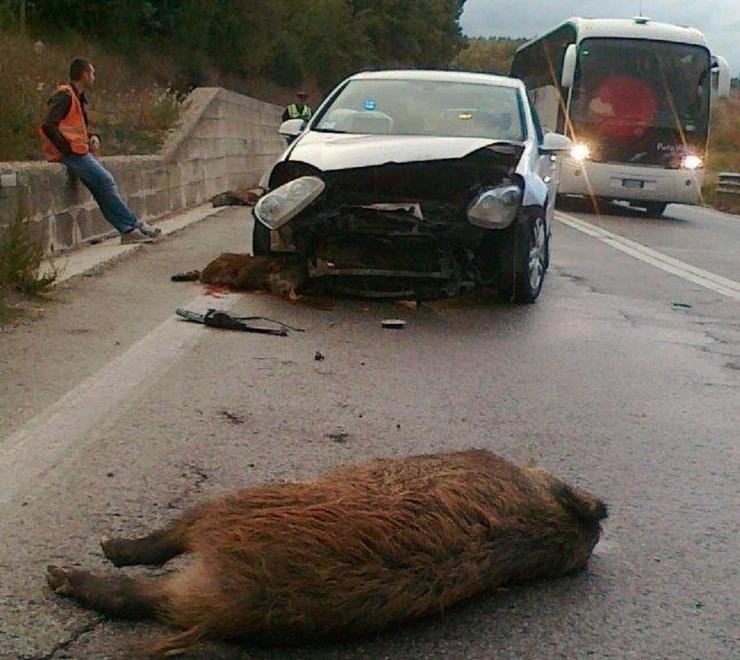
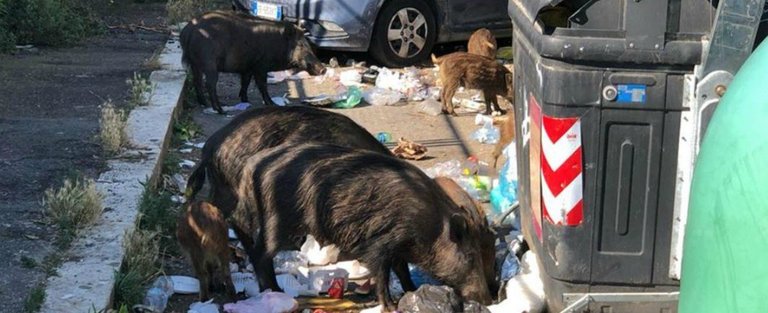
Im on the side of the bears and all other wildlife
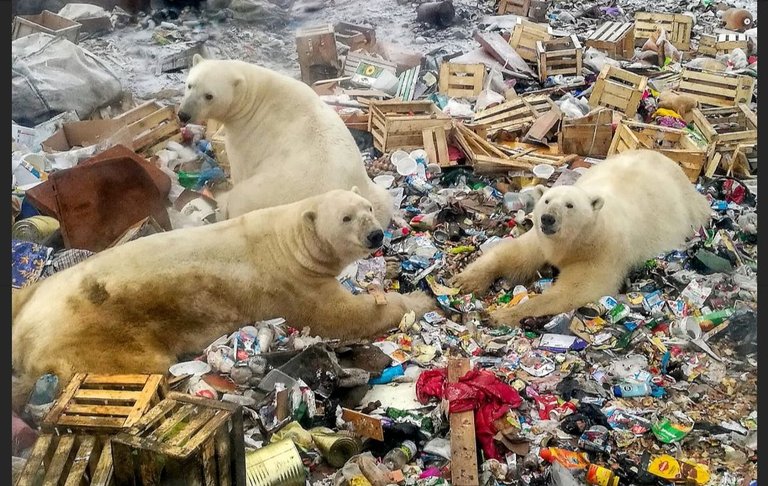
And i think its us that invade their territories, by human over population and cosumist lifestyle, they have no choice but come to urban area searching for food, because forests are decreased to be farms for us, or global warming makes deforestation
It even happened to polar bear foraging on trash for food
Ithink human is the one to be blame for invading others species territories
Non credo sia vera come immagine.
Neanche io sinceramente, infatti è pubblicata da "Carlo Hebdo" Giornale Irresponsabile..
Ma sembrava carina e riassumeva la situazione... mi ricordava anche la foto dei Beatles che attraversavano la strada sulle strisce pedonali. Solo che questa volta sono I Cinghiali ^^
Are we talking about bears or boars?
We are talking about boars , not bears ^^